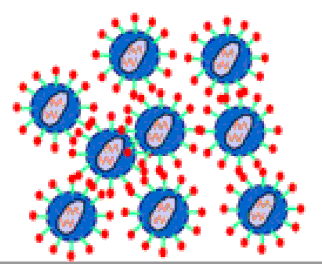Papers in the Biological Sciences

Qingsheng Li Publications
Document Type
Article
Date of this Version
11-1-2010
Citation
J Immunol. 2010 November 1; 185(9): 5417–5424. doi:10.4049/jimmunol.1002197
Abstract
Much effort has been spent recently in identifying host factors required for HIV-1 to effectively replicate in cultured human cells. However, much less is known about the genetic factors in vivo that impact viral replication in lymphatic tissue, the primary anatomical site of virus-host interactions where the bulk of viral replication and pathogenesis occur. In order to identify genetic determinants in lymphatic tissue that critically affect HIV-1 replication, we used microarrays to transcriptionally profile and identify host genes expressed in inguinal lymph nodes that were associated determinants of viral load. Strikingly, ~95% of the transcripts (558) in this data set (592 transcripts total) were negatively associated with HIV-1 replication. Genes in this subset (1) inhibit cellular activation/ proliferation (ex.: TCFL5, SOCS5 and SCOS7, KLF10), (2) promote heterochromatin formation (ex.: HIC2, CREBZF, ZNF148/ZBP-89), (3) increase collagen synthesis (ex.: PLOD2, POSTN, CRTAP), and (4) reduce cellular transcription and translation. Potential anti-HIV-1 restriction factors were also identified (ex.: NR3C1, HNRNPU, PACT). Only ~5% of the transcripts (34) were positively associated with HIV-1 replication. Paradoxically, nearly all these genes function in innate and adaptive immunity, particularly highlighting a heightened interferon system. We conclude that this conventional host response cannot contain HIV-1 replication and, in fact, could well contribute to increased replication through immune activation. More importantly, genes that have a negative association with virus replication point to target cell availability and potentially new viral restriction factors as principal determinants of viral load.
Li JI 2010 Host genes associated SuppTable2.xls (23 kB)
Li JI 2010 Host genes associated SuppTable3.xls (20 kB)
Li JI 2010 Host genes associated SuppTable4.xls (21 kB)
Li JI 2010 Host genes associated SuppTable5.xls (19 kB)
Li JI 2010 Host genes associated SuppTable6.xls (25 kB)
Li JI 2010 Host genes associated SuppTable7.xls (43 kB)


Comments
Copyright © 2011 Springer Verlag. Used by permission.